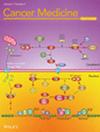Expression of Cancer-Testis Antigens MAGE-A1, MAGE-A4, NY-ESO-1 and PRAME in Bone and Soft Tissue Sarcomas: The Experience From a Single Center in China
Abstract
Objective
Sarcomas are a heterogeneous group of malignancies, low disease-control levels and the limited durability of responses have prompted the exploration of various novel immunotherapeutic approaches. To preliminarily explore the feasibility of cancer vaccines based on cancer testis antigen in the immunotherapy of sarcomas, we investigate the expression of Cancer/Testis Antigens (CTA) MAGE-A4, PRAME, MAGE-A1, KK-LC-1, and NY-ESO-1 in bone and soft tissue sarcomas, with the aim of assessing their potential for use in sarcoma immunotherapy and determining their expression levels in different subtypes.
Methods and Results
We employed immunohistochemistry and multiplex immunostaining microarrays (MI chips) to assess the expression of MAGE-A4, PRAME, MAGE-A1, KK-LC-1, and NY-ESO-1 in 21 cases of undifferentiated pleomorphic sarcoma (UPS), 26 cases of smooth muscle sarcoma, 28 cases of liposarcoma, 40 cases of osteosarcoma (OS), and 13 cases of chondrosarcoma. MAGE-A1 showed the highest expression in osteosarcoma (32.50%), while it was lower in liposarcoma and undifferentiated pleomorphic sarcoma (10.71% and 10.00%) and undetectable in chondrosarcoma. MAGE-A4 expression was elevated in osteosarcoma and undifferentiated pleomorphic sarcoma (40.00% and 33.00%), but lower in liposarcoma and smooth muscle sarcoma (17.00% and 33.00%). NY-ESO-1 expression was relatively low across all sarcoma subtypes. PRAME expression was highest in undifferentiated pleomorphic sarcoma (47.62%) and low in chondrosarcoma (7.69%). None of the sarcomas expressed KK-LC-1. Additionally, while there was no statistically significant correlation between CTA expression and patient age or gender, some differences related to age and gender were observed.
Conclusions
CTA expression in bone and soft tissue sarcomas was correlated with both CTA type and sarcoma subtype, showing relatively high levels of expression in undifferentiated pleomorphic sarcoma (UPS) and osteosarcoma (OS). The poly-expression of MAGE-A4, PRAME, and MAGE-A1 across all subtypes suggests that these antigens may serve as potential targets for sarcoma-specific immunotherapy.


 求助内容:
求助内容: 应助结果提醒方式:
应助结果提醒方式:


